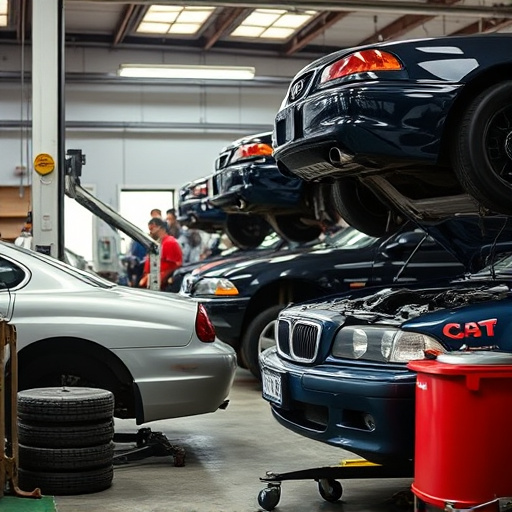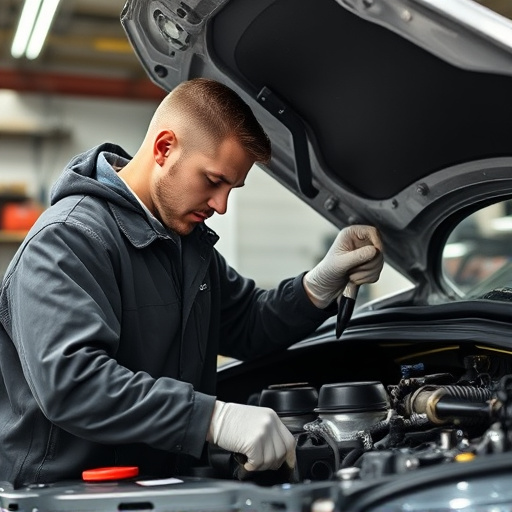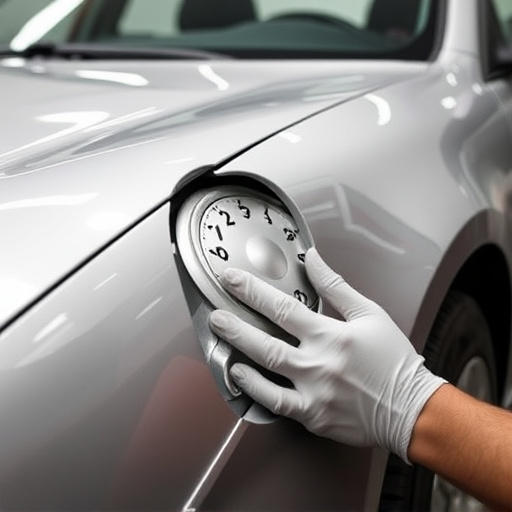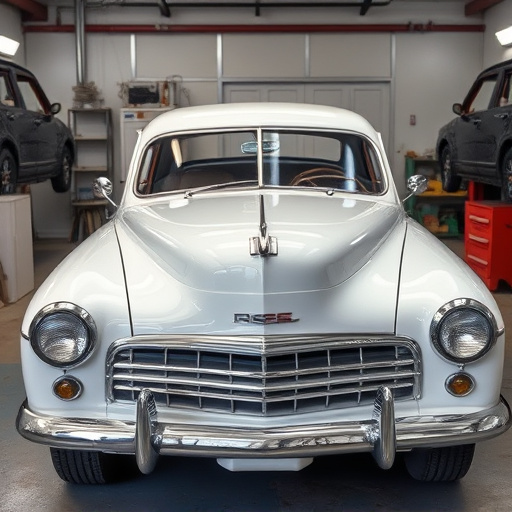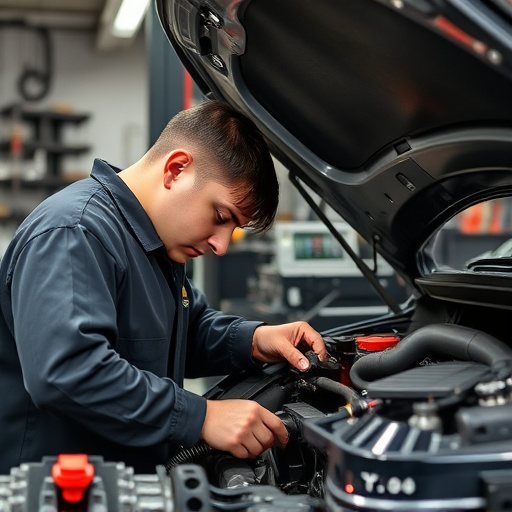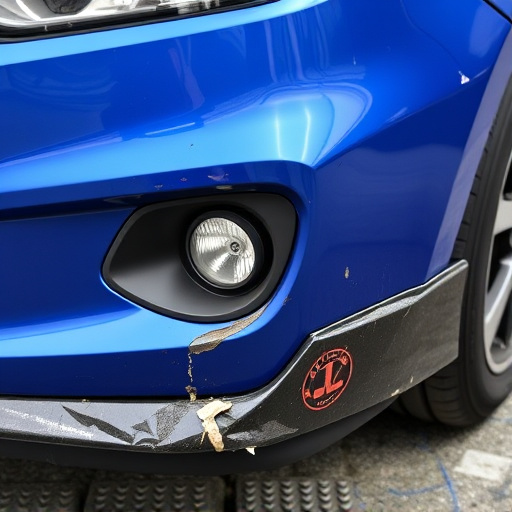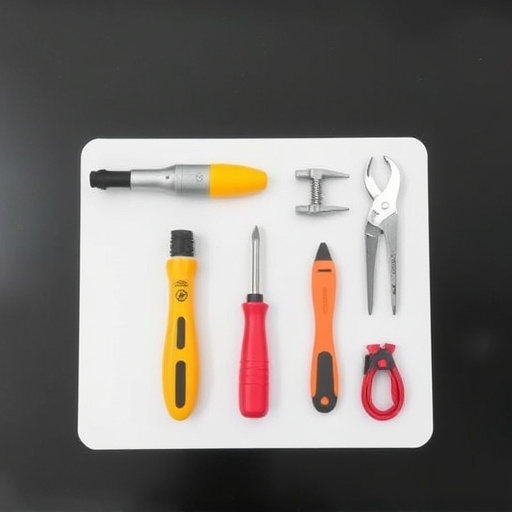Tesla repair scanning is a sophisticated process using advanced software and hardware tools to diagnose and fix issues in Tesla vehicles. These tools detect even minor anomalies across systems, aiding technicians in conducting thorough collision repairs. By integrating software and hardware, this method streamlines diagnostics and resolutions for repair centers. Up-to-date specialized diagnostic tools, structured processes, and collaboration between experts ensure accurate identification and effective solutions for auto painting, repair, and body work.
Tesla repair scanning is a game-changer in the automotive industry, offering a comprehensive approach to diagnosing and fixing electric vehicle (EV) issues. This article delves into the intricacies of Tesla repair scanning, focusing on software and hardware integration. We’ll explore how these elements work together, examining real-world applications and best practices for efficient repairs. By understanding these processes, technicians can enhance their skills, ensuring optimal performance for Tesla vehicles.
- Understanding Tesla Repair Scanning: A Comprehensive Overview
- The Role of Software and Hardware Integration in Tesla Repairs
- Best Practices for Effective Tesla Repair Scanning and Integration
Understanding Tesla Repair Scanning: A Comprehensive Overview

Tesla repair scanning is an intricate process that combines advanced software and hardware solutions to diagnose and rectify issues within Tesla vehicles. It’s a comprehensive approach designed to cater to the unique electrical and digital systems found in these innovative cars. By seamlessly integrating cutting-edge technology, this method ensures precise identification of problems, facilitating efficient car collision repair and auto body repair processes.
This process leverages specialized tools that can detect minute anomalies in software code and hardware components, encompassing everything from sensors and actuators to the vehicle’s complex network architecture. This level of detail is crucial for accurate diagnosis, especially during intricate auto body painting tasks. Through this method, repair technicians gain invaluable insights into a Tesla’s overall health, enabling them to conduct thorough, effective, and targeted car collision repairs.
The Role of Software and Hardware Integration in Tesla Repairs

In the realm of Tesla repairs, software and hardware integration plays a pivotal role, revolutionizing how vehicle issues are diagnosed and addressed. Tesla repair scanning tools act as powerful facilitators, enabling collision repair centers to navigate complex systems with precision. These advanced diagnostic devices not only detect car damage repair needs but also pinpoint specific hardware or software components that require attention. By integrating both aspects, the process becomes more efficient and effective, ensuring that every issue—from a minor fender repair to more intricate electrical glitches—is accurately identified and resolved.
Through seamless software-hardware integration, Tesla owners can expect their vehicles to be restored to optimal condition promptly. This symbiotic relationship between technology and skilled labor fosters a modern approach to collision repair, where advanced scanning methods complement the expertise of professionals. As such, Tesla repair scanning is not just a process but a testament to how innovative solutions can transform traditional car damage repairs into streamlined, state-of-the-art experiences.
Best Practices for Effective Tesla Repair Scanning and Integration

When it comes to Tesla repair scanning and software/hardware integration, a systematic approach is key. Best practices involve utilizing specialized diagnostic tools designed specifically for Tesla vehicles. These tools should be capable of reading and interpreting both hardware and software components, ensuring no aspect of the vehicle’s complex network is left unaccounted for. Regular updates are crucial; keeping up with Tesla’s rapid technological advancements ensures your scanning equipment remains effective.
For seamless integration, a structured process should be followed. This includes meticulous documentation during the scanning phase, allowing for precise identification of any software or hardware discrepancies. Equally important is collaboration between auto body repair experts and tech-savvy professionals to interpret scan data accurately. By combining their expertise, they can pinpoint issues related to auto painting, vehicle repair, and intricate auto body repair work, leading to more effective solutions.
Tesla repair scanning is a game-changer for maintaining and repairing these cutting-edge vehicles. By focusing on software and hardware integration, technicians can efficiently diagnose and resolve issues, ensuring optimal performance. Adhering to best practices, such as utilizing specialized tools and staying updated with Tesla’s software releases, allows for seamless integration, enhancing the overall repair process. This advanced approach to Tesla repairs is a must-have in today’s digital era, where these electric vehicles continue to revolutionize the automotive landscape.

